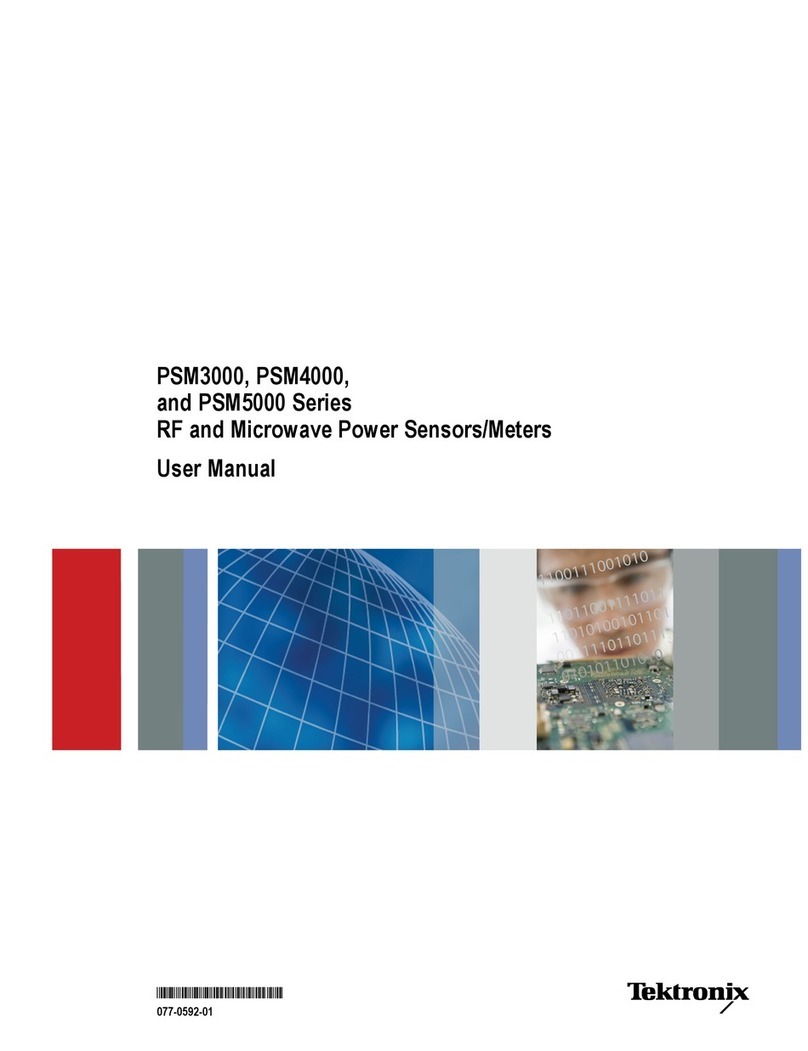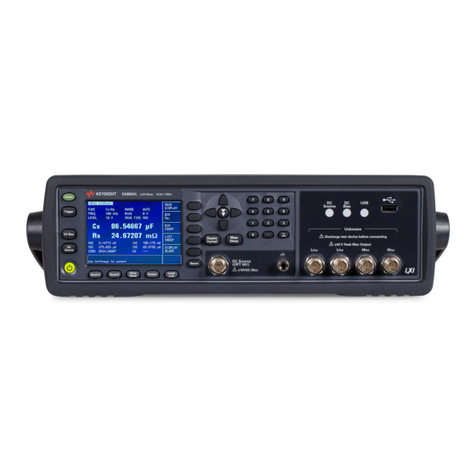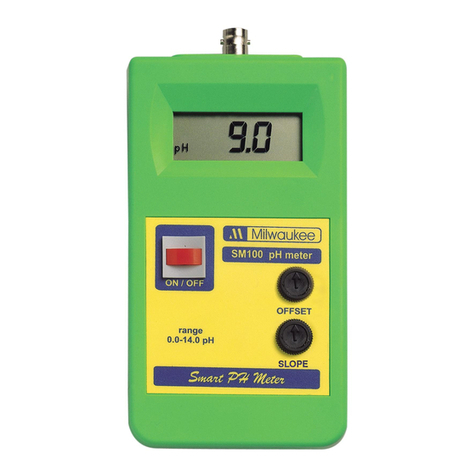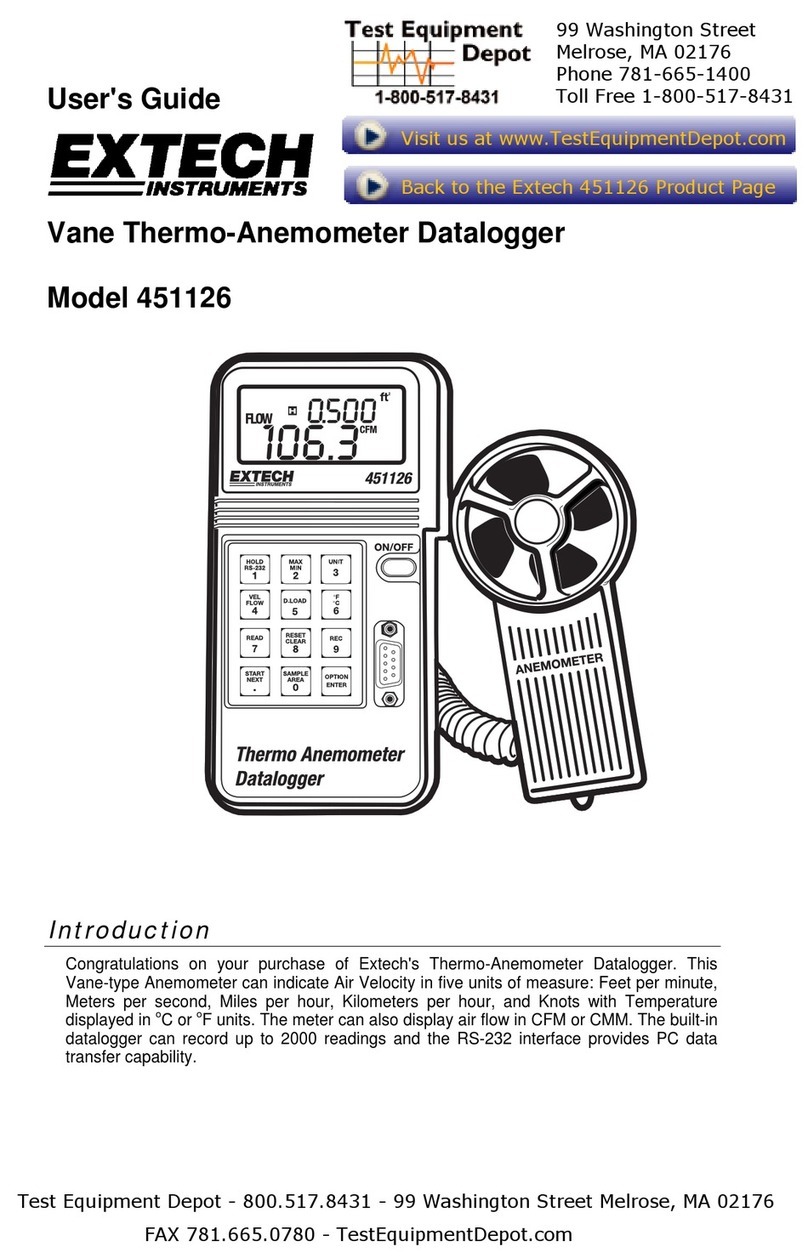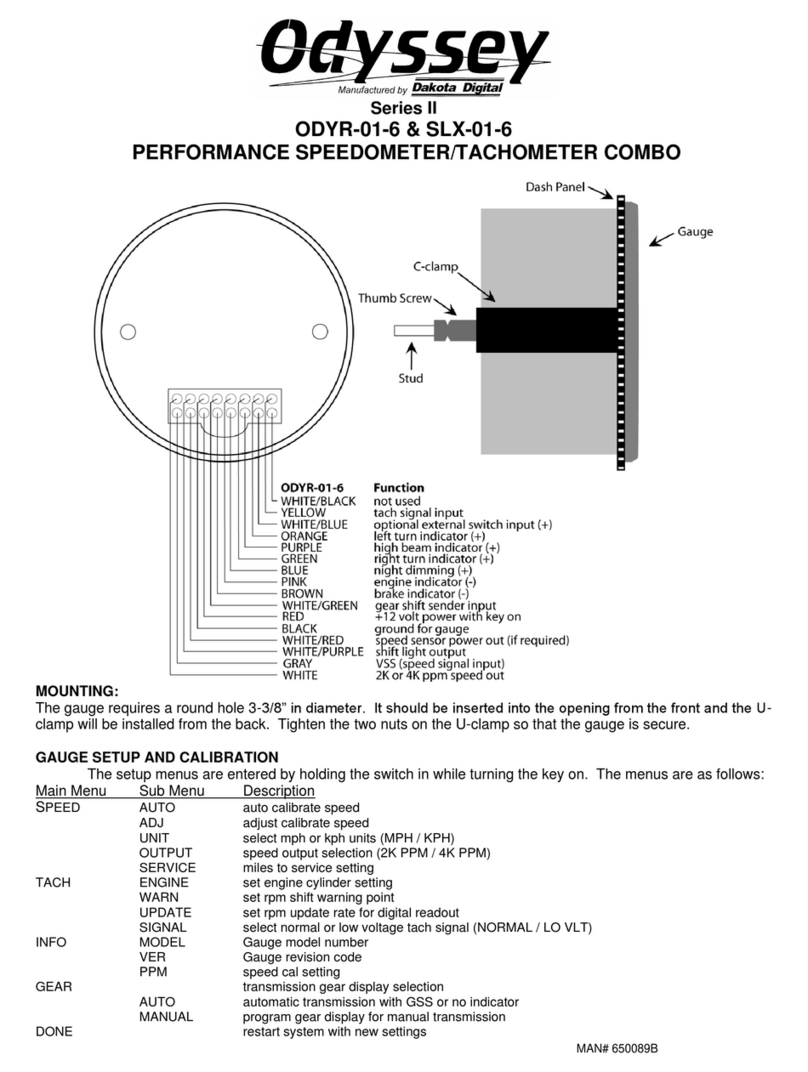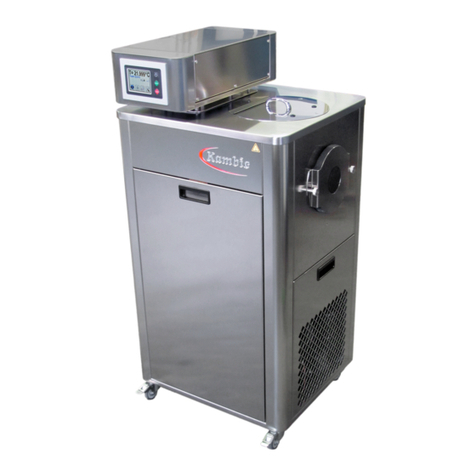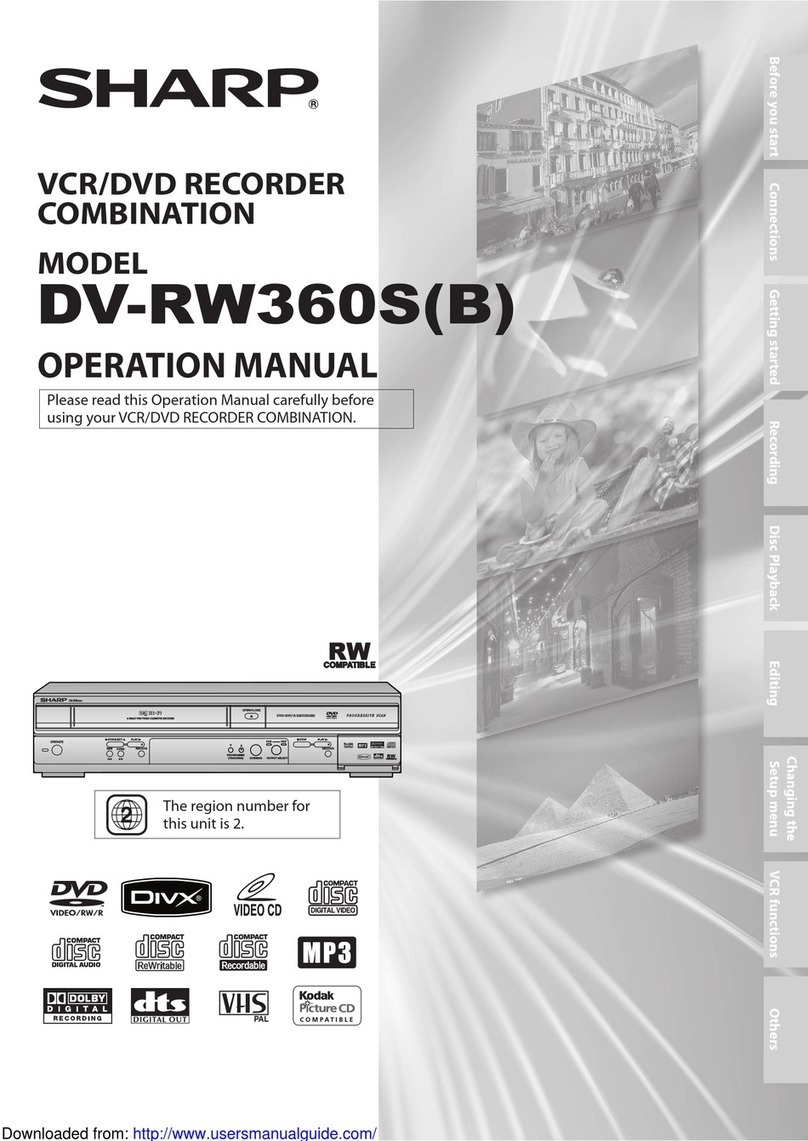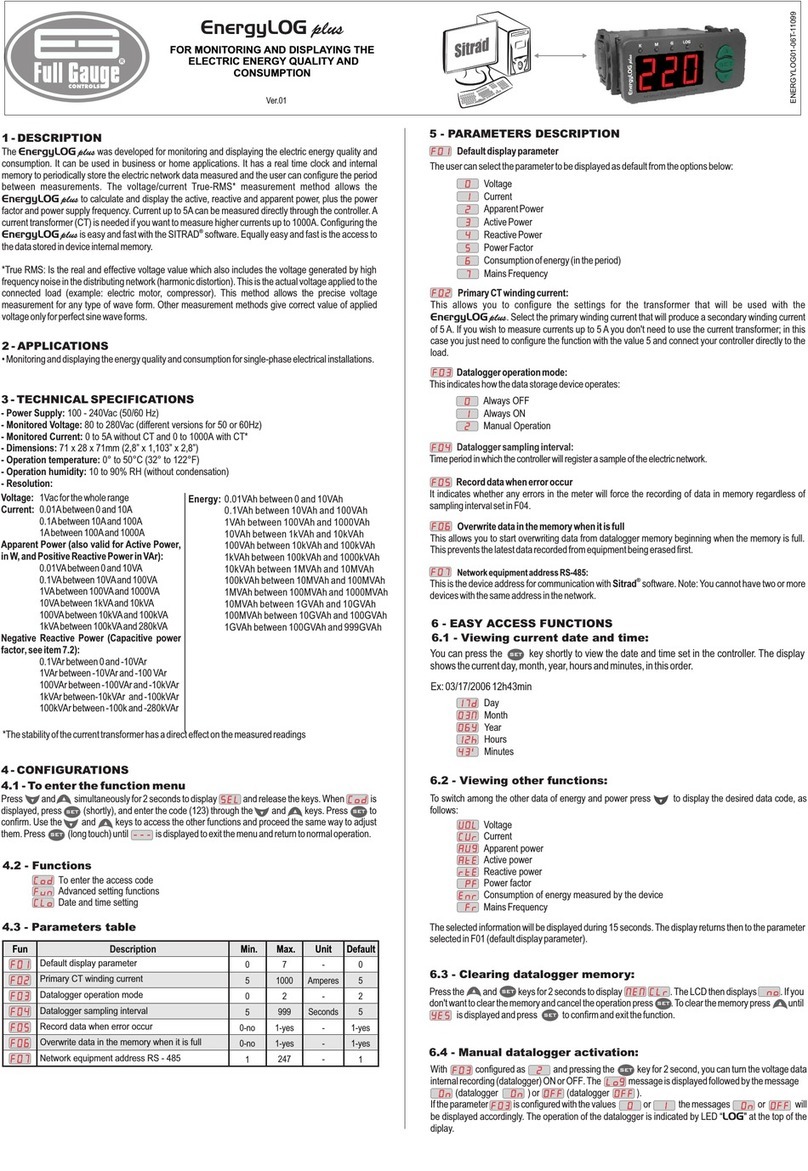Femtochrome FR-103MN User manual

FEMTOCHROME. RESEARCH, INC.
FR-103MN AUTOCORRELATOR
INSTRUCTION MANUAL

2123 4th Street Berkeley, California 94710 Tel (510) 644-1869 Fa (510) 644-0118
onnnil* to ^ h (3)fo n n tn ^ h rr% n n o r^r\m h tt r v //uaaAa/ fomtnr^hrnmA r.n m

TABLE OF CONTENTS
L Introduction
...............................................
.
2. Theory of Operation
..................................
.
3. Operating Instructions
a. Fundamental Characteristics
...........
b- lignment Procedure
......................
a lignment Hints
..............................
cL Wavelength Dependence
.................
e. Wide Scan Range/Scan Nonlinearity
f- Input Beam Polarization
................
g. Pulsewidth Calibration
......
.............
h. Major Optics lignment
.................
2
o 1 11 1 1
2
3
IX 1 X 1 A 1 A 1 A 1 L

Options
a. Crosscorrelation (/CC)
..........................................
b. Interferometric Option (flO)
......................
c. Fiber dapter (/F )
...............................................
.
d Fiber Coupled (/FC)
...............................................
e- Low Rep Rate Option (/LRR)
................................
f. Computer Data cquisition (/CD )
..........
g- VG Display Option (/VG )
............................
h- Extended Wavelength (IR) Options (/1000, /2000)
Spare Parts List
................................................
........
..
.
Warranty Information

The standard FR-103MN utilizes background-free (noncollinear) second harmonic generation
(SHG) for the measurement of the autocorrelation fimction of repetitive ultrashort laser pulses.
The unit can be set to crosscorrelate two synchronized pulses of different wavelengths.2
Collinear SHG (with background) with interferometric resolution is offered as an option(/IO),3
The Low Rep Rate Option4 (/LRR) renders the unit applicable for any rep rate (as low as 4Hz).
The optional Fiber dapter (/F ) or (/FC) facilitate easy alignment and repeatable connection of
fiber coupled beams. n optional /D board installed in the unit and its software (Computer
Data cquisition (/CD )),provides an interface (RS232) of the FR-103MN with a PC, resulting
in a complete pulsewidth monitoring system. lternatively,the NG option renders the unit
completely self-contained in a single package including a color TFT display.
1 For high resolution or best performance at a specific wavelength, a custom crystal
can be selected
2
3
See 3L Crosscorrelation
,
p. 14
See 4a. Interferometric Option, p. 16
See 4e. Low Rep Option, p.19

1. INTRO UCTION
The Model FR-103MN Rapid Scanning utocorrelator is a high resolution instrument for
continuous monitoring and display of femtosecond and picosecond laser pulses. While its
unprecedented resolution makes it ideal for fsec pulses from modelocked lasers with high peak
power,the instrument’s high sensitivity renders it perfectly suited also for long pulses with low
power. The operation ranges of the FR-103MN can be interchangeably selected as follows1:
FR-103MN/BBO (410-900 nm): BBO crystal (0.3 mm/60°)/VS Beamsplitter/VS PMT
FR-103MN/KDP (530-1070 nin): BBO crystal (0.3 mm/35°) ^S Beamsplitter/VS PMT
FR-103MN/IR (700-1800 nm): LiI03 crystal (1 mm/24°)/IR Beamsplitter/IR PMT
Note: The wavelength range of410-1800nm can be further extended into the IR region
optionally, by photodiode detector modules /1000 (1000-2000nm) and /2000 (2000-3000nm).
These options utilize the same optics as in the /IR version.
n appropriate set of fundamental blocking filters is included for each operating range.
The unique scanning mechanism6 of the FR-103MN provides a dispersion free scan range of
>60 psec with high linearity. Dispersion is eliminated through the exclusive use of high reflecting
metallic coated mirrors,with a focus in the nonlinear (NL) crystal obtained by means of a curved
mirror. The pulsewidth resolution is <5 fsec using an ultrathin (<0.05 mm) crystal.

2. THEORY OF OPERATION
The FR-103MN utilizes the SHG method of the 1st kind in the conventional Michel son
Interferometer set-up of pulsewidth measurement.5 In the standard configuration, noncollinear
beams lead to the background-free autocorrelation measurement Repetitive linear delay
generation in one arm of the Michelson arrangement is introduced by a pair of parallel (//)
mirrors centered about a rotating axis.6 In the geometry of Figure 1,the rotation of the // mirror
assembly leads to an increase (or decrease) of path length for
汪
traversing beam.6 Thus,the
transmitted pulse train is delayed (or advanced) about the reference (zero delay) position. This
delay varies with time as a fixnction of the shaft’s rotation. For small angular changes, the delay
as a function of time is linear and given by6
T = { ^ . } t (1)
c v 1
where D is the distance between the // mirrors,f is the frequency of rotation,and c is the speed of
light.
Rotation of the // mirror assembly leads to a repetitive generation of linear delay which,used in
the described SHG configuration, provides a continuous display of the autocorrelation function
of the pulses on a conventional high impedance oscilloscope synchronized to this rotation.
5
6
E-P. Ippen and C,V. Shank, "Ultrashort Light Pulses/1 SX. Shapiro ed” New York:
Springer-Verlag (1977)
Yasa and R M mer,Optics Commun” V36,406 (1981)

The total scan range is given by6
^2d
I — c (2)
where d is the length of the scanning mirror.
Figure 1 Rotating Parallel (||) Mirrors
figure of nonlinearity over the full scan range is6
NL=d/4D (3)
In the standard configuration of the FR-103MN,the scan mirror has a size of d = 0.75n and the
mirrors are separated by a distance of D = 1.25”. The rotation frequency is f = 10 Hz. [f=5Hz
and 2.5Hz (or /LRR) are also selectable by a slide switch near the // mirrors.】 Hence, the
following numerical values follow from Equations (1)_(2):
T/t = 12.5 psec/msec [6,25ps/ms for 5Hz]
Tt = 75psec

3- OPERATING INSTRUCTIONS
3a. Fundamental Characteristics
The SHG autocorrelation function of an incoming train of ultrashort pulses is traced when the
SIGN L output of the FR-103 is input to a >20 MHz bandwidth (IM il) oscilloscope, triggered
externally by the TRIGGER output- The output signals and controls of the FR-103 are described
below.
G IN The high voltage applied to the PMT (photomultiplier) is varied over the range
of 0-1000 volts.
DEL Y The trigger pulse generated by a photointermpter is variably delayed using this
control. The introduced delay is in the range of 0.1-10 msec. This function can be
used to expand the time-base of the oscilloscope, for the observation of shorter
pulses. The smaller knob near this pot provides finer control of DEL Y.
SIGN L The SHG signal detected by the PMT is output through a preamplifier circuit.
The integration time of this circuit is selected by a five-position slide switch
(1 fsec — 1 psec),accessible on the back panel.
TRIGGER The trigger pulse from the photointerrupter (coupled to the motor) is output
through the delay circuit. The oscilloscope trigger channel should be set to:
EXT” NORM., and (+) SLOPE for proper synchronization. Initially, timebase
setting should be lmsec/div or 2msec/div.
TRIG. SELECT slide switch near the DEL Y pot on the front panel disables DEL Y
when set in Pos.#0. In Pos.#l & 2 the trigger DEL Y is functional*
Notes:
1 • In the factory setting of the FR-103MN,the TRIG SELECT switch is set to “0
and the autocorrelation trace peak occurs right at the (+) edge of the DEL Y
disabled trigger pulse,set about a central position of the full scan range. [The
reading of the T-stage micrometer for this setting is indicated on it.]
This is the normal recommended mode of operation.
SPEED SELECT slide switch,accessible inside the right back comer, selects 3 motor speeds
for the // mirror assembly: 10Hz/5Hz/2.5Hz. The calibration factor,given in
the manual for 10Hz,is proportional to the motor speed. E.g. for 5Hz,the
calibration factor is 6.25ps/ms.

Scan Range: >7 5 psec
Resolution9: <5 fsec
Delay Calibration Factor (T/t): 12.5 psec/msec( 10Hz). The exact value of this factor has a weak
dependence on the position of the pulse peak within the delay window (scan range).
Experimentally,the instrument is calibrated by micrometer translation of the comer
mirror,as described in Section 3g.
Sensitivity: Depending on the operation wavelength and the characteristics of the
NL crystal, an average input power (Pav) of a few mW is typically sufficient.
Using an optimal crystal,the noise equivalent signal level can be as low as
PpkPav= 0.2 x 1 O^W2, where Ppk is the peak power.
Minimum Pulse Repetition Rate: For pulse repetition rates <1 MHz, the autocorrelation trace
displays dips due to the vanishing of the signal between pulses. However,the trace
envelope corresponds to the autocorrelation function even for lower pulse repetition
rates. In general,a higher minimum pulse repetition rate is needed for shorter pulses,for
direct observation on a real time oscilloscope. For lower rep rates,/LRR needs to be
used.
The basic properties of the FR-103MN can be summarized as follows:
Resolution is limited only by the SHG crystal thickness,which is specified by the
customer* The standard crystal thickness is 0.3mm, giving a resolution of
〜
15fs. Using a
thinner (<0.05mm) crystal,a resolution <5fs can be achieved.

3b. Alignment Procedure
The standard optical schematic of the FR-103MN is sketched in Figures 2 and 3. [When
/FA(CC) Option is included, the alternate beam configuration described in section 4.a is
applied. In this case, the delayed and fixed beams described below are reversed. See
Sect.4a] The beams lie mainly in the horizontal plane through the centers of Ml and the input
aperture. Most of the optical components are factory aligned and need not be reset. Described
below,the adjustment of the FR.103MN for proper operation is straightforward.
<
Corner-fiiirror
retrorefledor
M2 Second
Harmonic
-* -
M1
Angle tuned
SKfG cry tal
Beam
plitter
><- M3
♦
Figure 2 FR-103MN Top View Schematic
SHG cry tal
Aperture Fundamental
blocking filter
Figure 3 FR-103MN Side View Schematic

(i) Direct the vertically polarized input beam through the center of the input aperture and orient
the FR-103 (by lateral movement and/or using the level adjustment knobs) such that the
incoming beam is incident on Ml slightly left of center (looking from the front side). The return
beam from the comer mirror will form a spot on Ml symmetrically displaced to the right by 6-7
mm. Typical positions of the beam spots are illustrated in Figure 4. Lateral movement of the
FR-103 will adjust the separation between the incident and return beams to an optimal value of
4_5mm.
M2
Incident
beam pot Return beam
pot from
comer mirror Beam pot
from rotating Beam pot from
corner mirror
mirror
Figure 4 Beam Spots on Ml and M2
(ii) When the described alignment is set,the retroreflected beam from the comer mirror
(fixed beam) forms a spot on the PMT housing displaced to the right of the aperture by typically
2 mm (vertical mark) and centered between the indicated horizontal marks,as depicted in Fig 5.
Note that the exact beam positions on Ml and M2 is not critical, and it is only required to
center the beam at the input aperture and adjust the FR-103 sideways and height-wise, so
that the fixed beam forms a spot at the PMT as shown in Fig.5.
(iii) The beam from the delay arm of the Michelson Interferometer is retroreflected by the end
mirror M3, the control knobs of which are located on the right side of the FR-103. On
攀
retroreflection,this beam overlaps with the fixed beam in the crystal and forms a spot on the
PMT housing symmetrically displaced to the left of the aperture. (Figure 5)
Spot from Fundamental
delayed beam / blocking filter (inside)
PMT
Hou ing
Entrance aperture
for 2nd harmonic
Spot from
fixed beam
Figure 5 Front View of PMT Housing

(iv) lignment of M2 is controlled by three fine adjustment screws. Two of these,
orthogonally about the central one,render vertical and horizontal tilts. The central screw causes
mirror translation and thereby focus adjustment. The factory set controls of M2 should not need
to be readjusted. i
(v) Vertical alignment of the beam spots is easily accomplished using the levelling knobs of
the instrument. If tiie beam from the retroreflector is low (or high), then raise (or lower) the
back. (Figure 6)
Lower Back Raise Back
Beam spot from
corner mirror
Figure 6 Vertical lignment of the Beam Spot
(vi) Lateral movement of the FR-103 (while maintaining centering of the incoming beam at
the input aperture) adjusts the beam spacing at the PMT housing. (Figure 7) Optimal adjustment
will locate the two beam spots w/ 4-5mm in between, on either side of the aperture.
Sideway movement
adju t thi pacing
Figure 7 Horizontal lignment of the Beam Spot
(vii) The 2nd harmonic is generated (when the NL crystal is phase matched by angle tuning
,
i.e. rotation of the front panel micrometer) in the direction bisecting the two beam paths,and
therefore is incident on the PMT aperture.

(viii) The SHG crystals are generally hygroscopic. For maximum resolution,the crystals are
provided without windows but with single layer MgF2 R coatings which yield good protection
against exposure to H20. desiccator is also provided as a cover,for long term reliability of the
NL crystal. During an experiment, the desiccator is removed and placed beside the crystal
assembly- When the unit in not in use,this cover should be kept on the crystal to minimize its
exposure to humidity and dust. The desiccant must be periodically replaced as necessary.
(ix) The beamsplitter and Ml alignments are factory set and need not be readjusted unless a
major misalignment occurs. In such
迁
case,refer to Section 3h.
(x) filter transmitting the second harmonic and attenuating the fundamental is placed inside
the screw-on stub containing the aperture, on the PMT housing. It may be necessary to change
this filter if a major change of wavelength takes place. The unit is supplied with a standard set of
filters covering the wavelength range of operation.
3c. Alignment Hints
s described in the previous section,the factory set controls of the optical elements (Ml
,
M2 and
Beamsplitter) do not need to be readjusted. In order to obtain the autocorrelation ( C) signal,it
is only necessary to have (i) a vertical input polarization
,
(ii) NL crystal micrometer adjusted for
the correct phasematching angle and (iii)beams overlap in the crystal (which is adjustable by the
two large external knobs on the right hand side (RHS) which control M3). If the signal is not
easily observed,with the input beam is properly aligned as described in Sec.3b” the steps below
should be followed:
(1) Ensure that the input polarization is vertical and proper fundamental blocking filter for the
wavelength of operation is installed behind the PMT aperture stub. If provided,remove the IR
sensor cap off the PMT aperture.
(2) Using the horizontal control of M3 ( RHS top knob) steer the delayed beam directly into the
PMT aperture. Use lms/div
,
EXT, NORM, trigger w/ (+)SLOPE on the scope. With some G IN
on (depending on the input level) and adjusting the crystal micrometer, a square signal (about
6ms) should be observed at the correct phasematching angle. The (+) edge of the DEL Y
DIS BLED [“0"] is about the center of this observed scan range. 、
[ t this step,depending on the PMT response at the fundamental operation wavelength and the
duty cycle of the pulses, there may be some linear response (signal independent of the ciystal
angle) which may need to be further filtered out with an additional external fundamental blocking
filter. Such a linear response will also be observed if the IR sensor cap provided (which
upconverts the fundamental) is kept on the PMT aperture.]
(3) If a fiber coupled beam is being used (w/FA), it is necessary to control input
polarization for vertical, simultaneously with the phase matching angle.
(4) Once this square SHG signal (vanishing outside a narrow range of the x’tal micrometer) is
observed, adjust and fix input polarization at maximum signal. Note the micrometer reading,
(5) Move the delayed beam to its proper position (left side of the PMT aperture, symmetrical to
the fixed beam spot),using the horizontal M3 control knob on the RHS.
10

(6) Turn the x’tal micrometer counterclockwise slightly (about half a turn)-
(7) Carefully readjust the two RHS external knobs of M3 (which steer the delayed beam vertically
and horizontally), until the C signal is observed. t this step,the beams overlap in the NL x’tal
is to be obtained and an incremental step by step procedure may need to be carried out. The C
trace peak will appear within the ~6ms window defined by the square pulse observed in step(2)?
depending on the setting of the comer-mirror T-stage micrometer.
(8) That the correct C signal is being observed should be checked by (i) vanishing of the signal
outside a narrow range of the NL x’tal mike,and (ii) vanishing of the signal when the fixed beam
is blocked (by means of e.g* a piece of paper in front of the comer-mirror T-stage).
(9) Once the C signal is observed, x’tal micrometer, the two RHS knobs and input polarization
should be readjusted for a maximum signal The T-stage micrometer can be adjusted to center the
trace peak within the
〜
6ms scan range.
3d. Wavelength ependence
The phase matching angle for the NL crystal,for any given wavelength,is adjustable by the front
panel micrometer. The rotational stage the NL crystal is mounted on allows a wide range of
angles, and provides for a single standard NL crystal to readily angle tune over its entire
wavelength range.
3e. Wide Scan Range/Scan Nonlinearity
The delay range of the FR-103MN is proportional to the mirror size used in the // mirror
assembly. For long pulsewidths, the effect of scan nonlinearity needs to be taken into account The
pulse delay,as the // mirrors rotate,is a sinusoidal function of the rotation angle (time), and linear
only for small angles. It can be shown that6, to 3rd order,the pulsewidth measured must be
multiplied by the factor [l^CFWHM/lOO)2^], where FWHM is the foil width at half max of the
trace measured in msecs,to yield the actual pulsewidth. Therefore,even for a pulsewidth as long
as 25 psec (FWHM = 5 msec),the pulsewidth measurement error due to scan nonlinearity is
<0.5%.
3f. Input Beam Polarization
The FR-103 is set for a vertical input beam polarization. [It is also possible to convert the unit for
use w/ a horizontal input polarization' However, this is not recommended, since
迁
horizontally
polarized input beam is incident on the pellicle beamsplitter as P-polarized. This orientation
results in lower beam intensities incident on the crystal,since in general,the reflectance of the
beamsplitter is lower for P-polarization than S-polarization (vertical input polarization). The 2nd
harmonic generated for horizontal input polarization is therefore as much as ten times less than for
vertical input beam polarization,this factor being wavelength dependent. Please consult factory
for operation w/ a horizontal input polarization.]
11

3g. Pulsewidth Calibration
Calibration of the FR-103 can be determined by translation of the micrometer driven retroreflector
stage in the stationary aniL For a given translation x,the corresponding shift s in the position of
the trace peak (Figure 8) yields the calibration factor using the conversion formula
T 2
—=
-----
(psec/msec) ⑶
t 0.3^
where x is in mm and s is in msec. The result will be found to be close to the theoretically
calculated value of 7.5 psec/msec. However, there is a weak dependence of the calibration factor
on the position of the pulse peak within the scan range. Therefore,the exact experimental
calibration factor must be determined by the translation of the comer-mirror forward and
backward about a given measurement position and the mean value of the two corresponding
calibration factors determined must be used.
_ ( —
Figure 8 Comer Mirror Translation x (mm) and trace shift s (msec)
The conversion from the FWHM autocorrelation trace width ( T) to the FWHM pulsewidth ( t)
is a function of the assumed pulse shape. In Table 1
,
t/ T is given for commonly used pulse
shapes.
Pulse Shape t/ T
Hyperbolic Secant Sech2 (1.763t/ t)
Gaussian Exp [-2.77 (t/ t)2]
Single-Sided Exponential
0.648
0,707
0.5
Table !• Relationship between autocorrelation width and pulsewidth for various pulse shapes.

3h. Major Optics Alignment
Realignment of the pellicle beamsplitter (PBS) and the fold mirror Ml may be necessary if either
component has been moved.
Fold Mirror (Ml) Alignment
(i) Direct the input beam,using the level adjustment knobs and/or lateral movement of the
FR-103, such that it is incident on Ml slightly to the left of center as depicted in Figure 4.
(ii) Using a small screwdriver, carefully adjust the vertical and horizontal control screws on
M1 such that the return beam from the comer mirror forms a spot at a symmetrically opposite
position, as depicted in Figure 4.
Beamsplitter Alignment
The ultrathin (
〜
l^xm) pellicle beamsplitter used in the FR-103 must be handled with extreme
caution. THE PBS CANNOT BE CLEANE BY CONVENTIONAL METHO S. Keeping
the plastic cover over the PBS mount when the unit is not in use will minimize the accumulation
of dust on the pellicle surfaces,eliminating the need for cleaning. If absolutely necessary, a gentle
flow of dry air can be tried.
lignment of the PBS is achieved as follows: With the input beam properly directed and Ml
correctly aligned, the beam returned by the comer mirror should form a spot on M2 as described
in Figure 4. djustment of this beam position is controlled by the horizontal and vertical tilts of
the PBS. Vertical control is reached from above using a screwdriver. Horizontal control is
achieved by loosening two 4-40 screws holding the PBS mount and readjusting it. The return
beam retroreflected from the // mirrors can be blocked out during this procedure. When the rotor
is set in a scan position and M3 is properly adjusted for retroreflection (by means of the external
right side panel knobs),the delayed beam forms a symmetrical spot on M2. (Figure 4) The focus
mirror vertical and horizontal controls (on the left side panel) may need to be readjusted to set the
two beams symmetrical about the PMT aperture.
13

4.0PTI0NS
4a« Crosscorrelation
The FR-103MN can readily be used to crosscorrelate ultrashort pulses from two separate beams*
The second beam for crosscorrelation (CC) is introduced thru,the center of the opening in the
right side plate.( fiber adapter [/F (CC)] can be installed at this port, also.)
Note: The zero position of relative delay (ZPD) needs to be externally adjusted For the
midrange of the comer-mirror T-stage,the pathlength to the crystal for the 2nd beam is
about 50mm longer than the middle position of the scan range for the 1st beam,measured
from their respective entrance faces of the FR-103MN-[ Externally,the pathlength for the
1st beam should be longer by this amount (
〜
50mm)].
The FR-103MN can be set for crosscorrelation,as follows:
(i) The first beam is incident at the front aperture with the unit aligned as for autocorrelation ( C)
(position [1] of comer mirror in Figure 9 below).
【2】
m
2nd beam
Fixed 1 t beam
(autocorrelation) [1] Fixed 2nd beam
(cro correlation) [2]
€
---------------------------------------------------------------------
Delayed 1 t beam< r
/ v/
Tran mitted 1 t
beam (not u ed) [2]
BeamSpIitter
Retroreflected
delayed 1 t beam
1 st beam
Figure 9 FR-103MN Schematic of Crosscorrelation Operation
(ii) The comer mirror is tiien shifted by
〜
1/4” to position [2] such that the first beam is transmitted
at the back side of ML The second beam is introduced (after removing the plug) through the
aperture on the Right Side Panel,in a direction opposite but parallel to the first (with a shift of
〜
1/4"),such that it is translated by the comer mirror to traverse the first beam’s path in
autocorrelation.
14

5. Set the integration time constant switch to 1 fsec, and the motor speed to lowest (2JHz).
6. Fringe resolved autocorrelation will now be observed,when the retroreflecting mirror on the
// mirrors side is properly aligned using the control knobs on the Right Side Panel,
7. The beams can be given a small vertical deflection off the perfect retroreflection condition.
This prevents feedback to the laser without affecting interferometric operation. The beams going
back towards the laser form secondary spots on the semi-closed variable input aperture of the FR-
103 • These beams (from the two Michelson amis) should be set to overlap above or below the
main incident beam which enters the center of the input aperture.
j
8. Since the 1 fsec position has low gain and integration, sufficiently fiigh beam power may be
needed, depending on the pulsewidth^ wavelength^ and crystal type. small percentage of the
output of a typical modelocked Ti
辆
Sapphire laser is usually sufficient using the KDP crystal.*
»
9. When the comer-minor is installed back for noncollinear (backgromiiPfiree) operation,it should
be positioned such that the edge of its mount lines up with a scratch marked on the T-stage.

1.The FR-103 is aligned for the standard noncollinear (background free autocorrelation)
operation, with the retroreflecting comer mirror in its proper position on the translation stage.
. -
2.The comer-mirror is then removed and the Interferometric Option is mounted on the T-stage,
广
using mounting threads closest to the micrometer driving it. lignment screws of the /IO mount
are accessible from the Left Side Panel through two l/4ff holes.
3- lign the interferometric plane mirror to retroreflect the incident beam [factory aligned].The
beams from the two arms of the Michelson will then be overlapping and collinearly incident on
the NL crystal.
4. Direct the common spot of the two beams into the PMT aperture using the focus mirror
horizontal adjustment screw. Effective filtering of the fundamental is more critical in this mode
since the fiindamental is not spatially blocked out as in the noncollinear operation. It may be
necessary to use an additional fundamental blocking filter externally,depending on wavelength.
4b. Interferometric Option (/IO)
Table of contents
Popular Measuring Instrument manuals by other brands

Dewetron
Dewetron DEWE-CAM-GIGE-SPLIT-01 Technical reference manual
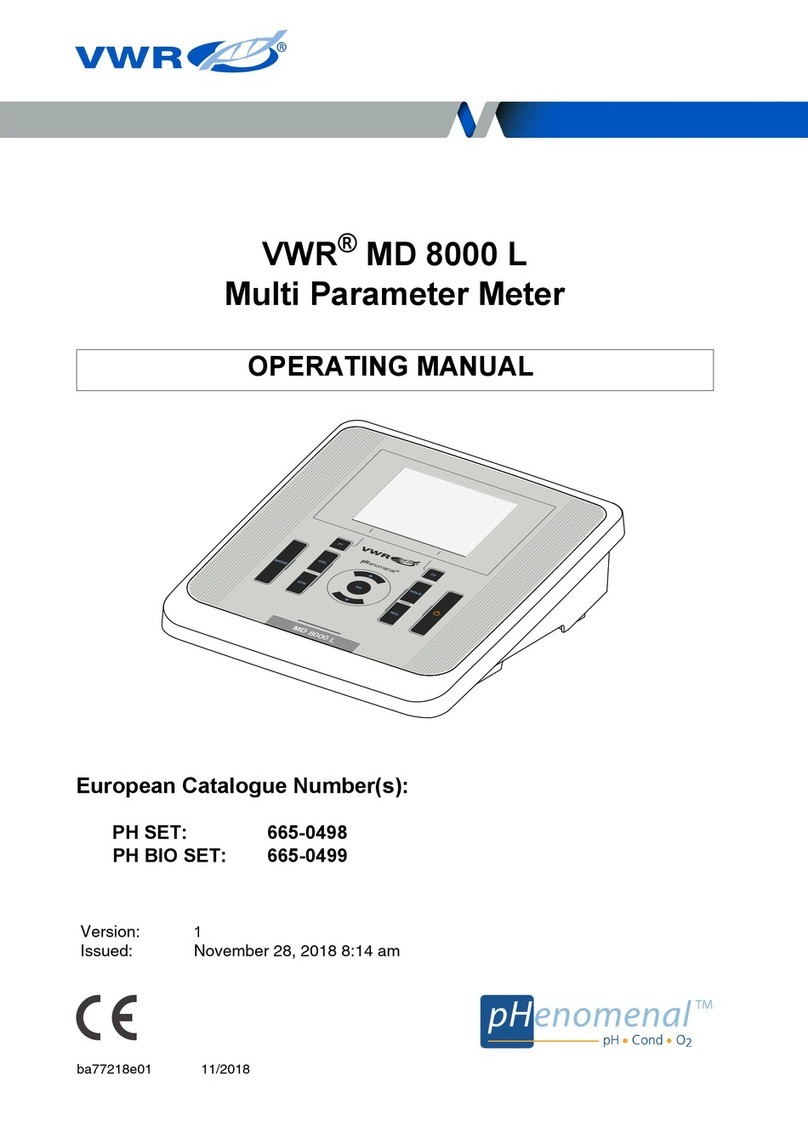
VWR
VWR MD 8000 L operating manual

palintest
palintest MICRO 500 operating instructions
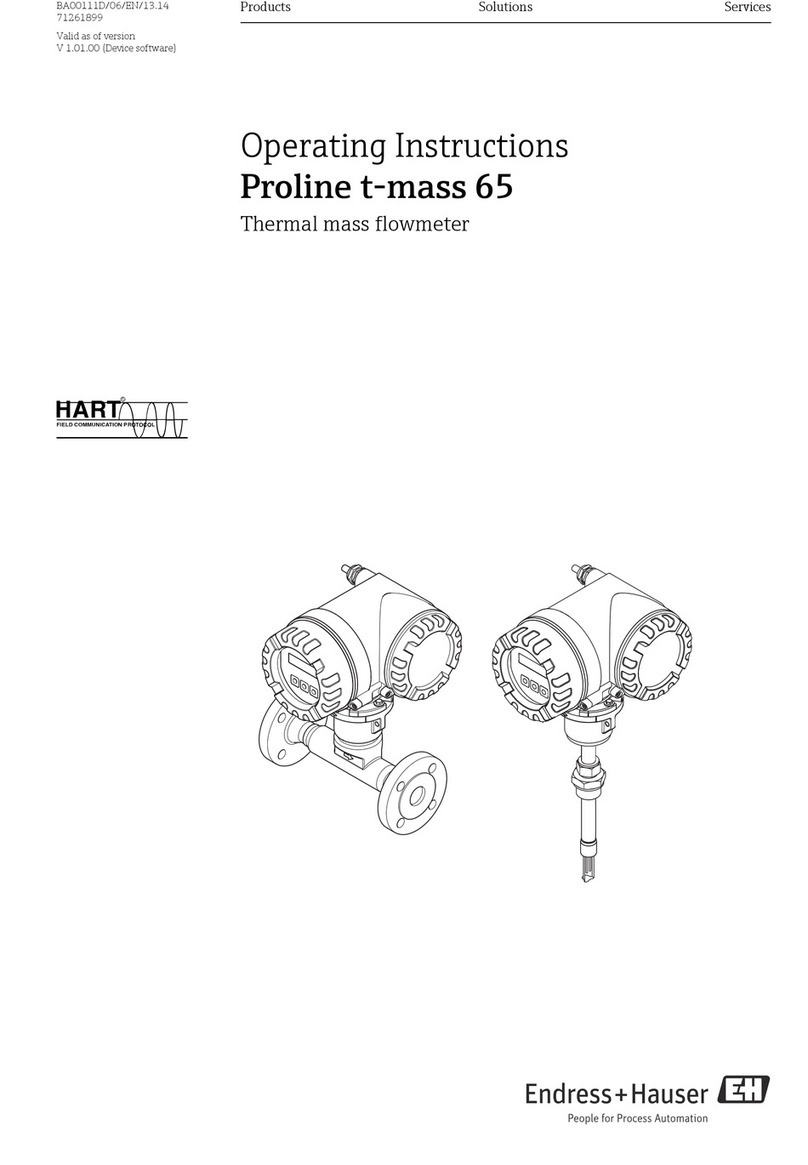
Endress+Hauser
Endress+Hauser Proline t-mass 65 operating instructions

ElektroPhysik
ElektroPhysik QuintSonic 7 Technical manual and operating instructions

PCB Piezotronics
PCB Piezotronics P357A09/NC Installation and operating manual

